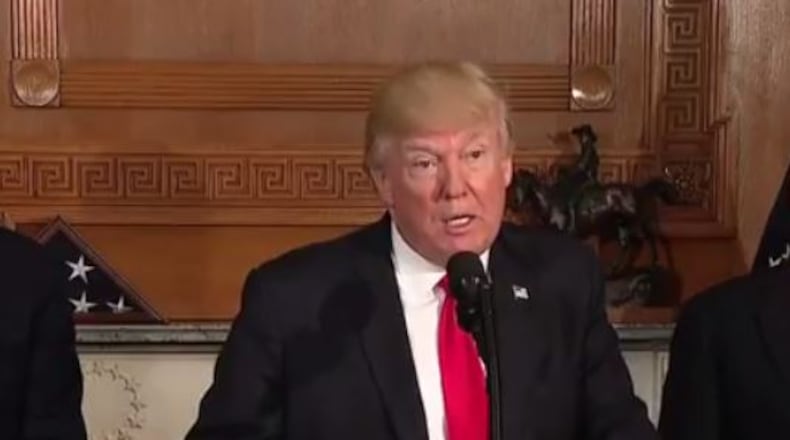1. Larger standard deduction and fewer tax brackets. For many Americans, the most immediate impact of the Trump tax plan would be a larger standard deduction, which would shield more of your income from federal taxes. Currently, individuals can exempt the first $6,300 of their income; married couples are at $12,600. This Trump plan would dramatically increase that to $24,000 for couples. Meanwhile, the number of tax brackets would shrink from the current seven - to just three, with tax rates of 10 percent, 25 percent and 35 percent. No figures were provided on exactly where those income brackets would be - that's to be filled in later, along with a lot of other details.
2. Trump plan would end many itemized deductions. For those in upper income brackets, the Trump tax reform plan would bring about dramatic change. Currently, taxpayers are allowed to itemize a host of deductions: Medical and Dental expenses, state and local taxes, state sales taxes, real estate taxes, personal property taxes, home mortage interest, charitable contributions, casualty and theft losses, certain work expenses, tax preparation fees, gambling losses, and other miscellaneous deductions. If this plan stays the same, all of those would be swept aside, except for the home mortgage interest deduction, and the write off for charitable contributions.
3. Big changes for businesses large and small. The big headline of the Trump tax plan - as it applies to the business world - is to cut the corporate tax rate more than half, taking it from 35 percent to 15 percent. That 15 percent rate would also apply to "pass through" business entities, which under current law are forced to pay higher individual rates. "Our objective is to make U.S. businesses the most competitive in the world," said Treasury Secretary Steven Mnuchin at the White House, as he cast the business tax changes in terms of a stimulus for economic growth. Democrats quickly said those type of business tax cuts will mainly benefit those already at upper income levels, like President Trump.
4. Other highlights include AMT, estate tax repeal. While the big headlines were on individual tax brackets and the corporate tax rate cut, there are some other proposals that deserve a mention. The Trump plan would repeal federal estate taxes, repeal the Alternative Minimum Tax and get rid of the 3.8% tax on investment income from the Obama health law. Eliminating the AMT is notable, because in the leaked 2005 tax return of President Trump, that was how he paid income taxes - look for Democrats to remind everyone of that. In terms of capital gains and dividends, the tax rates on those transactions would drop to 20 percent.
5. Lots of bullet points, but not lots of details. One of the most important details here is that the White House did not send Congress a detailed plan with legislative text - instead this proposal from President Trump gives his priorities, and now the White House and Congress must fill in the rest of the blanks. For example, while there would be three tax brackets, there was no proposal floated on what income levels those brackets would cover. On the one-time tax on overseas profits, the Treasury Secretary would only say it would be set at a "very competitive rate." The White House issued a single page of bullet points on what Mr. Trump wants - leaving many items TBD - especially on how the plan would impact the federal deficit.
What was released today was a one page summary of possible tax changes - if you look back at the 1986 Tax Reform Act, you can see that the final product is much more involved.
About the Author
